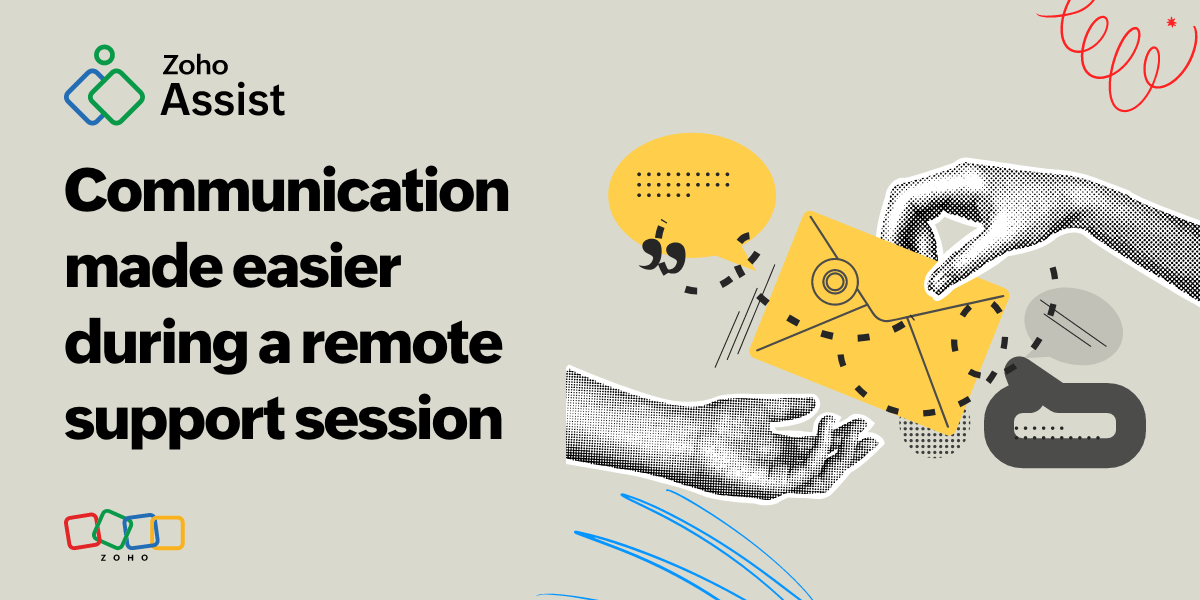- HOME
- Overview of communication channels in remote support sessions
Overview of communication channels in remote support sessions
- Last Updated : April 25, 2024
- 196 Views
- 2 Min Read

Remote support tools must offer a variety of instant communication channels to facilitate communication between technicians and end users and streamline issue resolution. This article provides a brief overview of the primary communication options available in remote support tools during active support sessions.
Chat interface
One of the most common communication mediums in remote support tools is the chat interface. This text-based communication channel allows technicians and remote users to exchange messages in real time. Chat acts as a convenient medium to provide instructions, ask questions, and share information without interrupting the flow of the remote support session. It is especially useful for resolving issues and providing step-by-step guidance to the remote users.
Voice call
For situations that require more dynamic communication, remote support tools should include a voice call feature. This allows technicians and remote users to engage in audio conversations during the remote access session. Voice calls are beneficial for discussing complex issues, providing detailed explanations, and clarifying instructions. They offer a more personal and immediate form of communication compared to text-based chat.
Video call
Some advanced remote support tools also offer video call capabilities, allowing technicians and remote end users to communicate face-to-face during an active session. Video calls add a human touch to a remote support tool, enabling users to establish a more personal connection and build rapport with the technician. They are particularly useful for demonstrating solutions, conducting training sessions, and addressing technical issues that require visual communication.
Screen sharing
Screen sharing is another essential communication medium in a reliable remote support tool. It allows technicians to view and interact with the end-user's screen, making it easier to diagnose issues and provide assistance. Screen sharing facilitates collaborative problem solving by enabling both the technician and the customer to view the same information simultaneously. Technicians can demonstrate solutions, troubleshoot errors, and guide remote users through the resolution process with greater clarity.
Annotation tools
Many remote support tools come equipped with annotation tools that allow technicians to annotate the remote user's screen during the support session. These tools enable technicians to highlight important information, draw attention to specific areas, and provide visual cues for troubleshooting purposes. Annotations can help improve comprehension and facilitate clearer communication between technicians and remote users
Effective communication is essential for successful remote support sessions, and remote support tools must offer a range of instant communication mediums to facilitate interaction between technicians and remote users. Communication mediums such as Text-based chat, voice calls, video calls, screen sharing, or annotation tools enable technicians to diagnose issues, provide assistance, and resolve problems efficiently. By leveraging these communication features, remote support tools should empower technicians to deliver exceptional support services and achieve better outcomes for remote users.